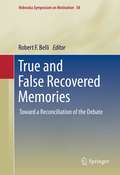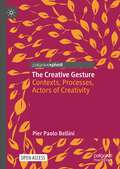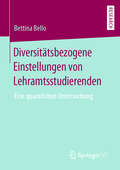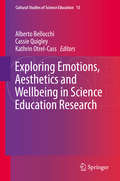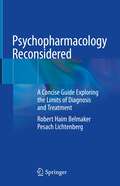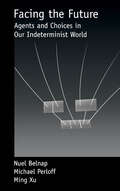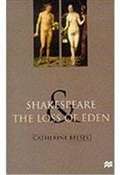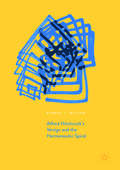- Table View
- List View
Reclaiming Herstory: Ericksonian Solution-Focused Therapy For Sexual Abuse
by Cheryl Bell-Gadsby Anne SiegenbergFirst published in 1996. Routledge is an imprint of Taylor & Francis, an informa company.
Reclaiming Herstory: Ericksonian Solution-Focused Therapy For Sexual Abuse
by Cheryl Bell-Gadsby Anne SiegenbergFirst published in 1996. Routledge is an imprint of Taylor & Francis, an informa company.
True and False Recovered Memories: Toward a Reconciliation of the Debate (Nebraska Symposium on Motivation #58)
by Robert F. F. BelliBeginning in the 1990s, the contentious “memory wars” divided psychologists into two schools of thought: that adults’ recovered memories of childhood abuse were generally true, or that they were generally not, calling theories, therapies, professional ethics, and survivor credibility into question. More recently, findings from cognitive psychology and neuroimaging as well as new theoretical constructs are bringing balance, if not reconciliation, to this polarizing debate. Based on presentations at the 2010 Nebraska Symposium on Motivation, True and False Recovered Memories: Toward a Reconciliation of the Debate assembles an expert panel of scholars, professors, and clinicians to update and expand research and knowledge about the complex interaction of cognitive, emotional, and motivational factors involved in remembering—and forgetting—severe childhood trauma. Contrasting viewpoints, elaborations on existing ideas, challenges to accepted models, and intriguing experimental data shed light on such issues as the intricacies of identity construction in memory, post-trauma brain development, and the role of suggestive therapeutic techniques in creating false memories. Taken together, these papers add significant new dimensions to a rapidly evolving field. Featured in the coverage: The cognitive neuroscience of true and false memories. Toward a cognitive-neurobiological model of motivated forgetting. The search for repressed memory. A theoretical framework for understanding recovered memory experiences. Cognitive underpinnings of recovered memories of childhood sexual abuse. Motivated forgetting and misremembering: perspectives from betrayal trauma theory. Clinical and cognitive psychologists on all sides of the debate will welcome True and False Recovered Memories as a trustworthy reference, an impartial guide to ongoing controversies, and a springboard for future inquiry.
Critical Approaches to the Psychology of Emotion (Concepts for Critical Psychology)
by Simone BelliThis fascinating book explores the different methodologies, resources and strategies that have been used to study emotion, and identifies emerging trends and research perspectives in the field. Emotion is a subject that has been thoroughly investigated in all fields of social and behavioural sciences. And yet the more we have attempted to individualize emotions and set limits that separate the different types of emotions, the more the subject has resisted these categorizations. Mapping the changes and diverse perspectives in the study of emotion, author Simone Belli explores how a critical psychology of emotion has emerged in order to answer this paradox, examining emotions within a social framework. Divided into five chapters, the book uses interdisciplinary critical approaches to cover everything from the interaction between emotion and language, to emotional contagion such as the spread of fear in a pandemic. There is also a particular focus on emotion analysis in digital environments, which have left a deep mark on our lives from the beginning of this century. Showcasing a selection of important investigations that have dealt with the study of emotions in society, Critical Approaches to the Psychology of Emotion is essential reading for students of critical social psychology, sociolinguistics, sociology, anthropology and philosophy.
Critical Approaches to the Psychology of Emotion (Concepts for Critical Psychology)
by Simone BelliThis fascinating book explores the different methodologies, resources and strategies that have been used to study emotion, and identifies emerging trends and research perspectives in the field. Emotion is a subject that has been thoroughly investigated in all fields of social and behavioural sciences. And yet the more we have attempted to individualize emotions and set limits that separate the different types of emotions, the more the subject has resisted these categorizations. Mapping the changes and diverse perspectives in the study of emotion, author Simone Belli explores how a critical psychology of emotion has emerged in order to answer this paradox, examining emotions within a social framework. Divided into five chapters, the book uses interdisciplinary critical approaches to cover everything from the interaction between emotion and language, to emotional contagion such as the spread of fear in a pandemic. There is also a particular focus on emotion analysis in digital environments, which have left a deep mark on our lives from the beginning of this century. Showcasing a selection of important investigations that have dealt with the study of emotions in society, Critical Approaches to the Psychology of Emotion is essential reading for students of critical social psychology, sociolinguistics, sociology, anthropology and philosophy.
A New Holistic-Evolutive Approach to Pediatric Palliative Care
by Carlo V. BellieniThis book illustrates why a holistic approach is important in Pediatric Palliative Care (PPC). Readers will learn this approach has a “horizontal” axis, featuring the patients’ mental and physical needs, as well as their environments. It has also a “vertical axis”: the evolutive changes of the patients throughout their development and their illness, their aspirations and fears. An evolutive (or dynamic) approach is mandatory. Each child/parent has a different experience of illness and a different path to recovery that is influenced by their age, gender, culture, but also by the state of their grief. To take care of them, we need to know the state of the subjects we are dealing with throughout their evolution in age (children) and in sorrow (both children and parents). Jung’s and Piaget’ schemes will be of support. This book also helps caregivers to know what ethics is. It teaches a new insight on the word “ethics”: not a series of principles or norms, but an approach based on humanistic virtues. Two criteria will be proposed to this aim: an ethics based on the refusal of inauthentic behaviors (or those behaviors that are copies of animals or machines) and a new criterion that even children have some ethical duties (not based on rules, but on naturally acceptance that their sight is modulated by the presence of their parents and friends). This ethical approach is explained to caregivers in a practical mode, ready for clinical exigencies. This book is also unique because it demonstrates that PPC also involves the true care of caregivers. It will explain how to approach, measure and overcome caregivers’ burn-out. Special attention is devoted to the approach to babies’ and children’s pharmacological and non-pharmacological analgesia and sedation. Pain assessment methods will be illustrated, as well as the development of a PPC web on the territory. This text includes perinatal and neonatal PPC. The book will be of valuable support to all those intensivists, pediatricians, nurses, psychologists, physiotherapists and healthcare professionals working in PPC units.
How Change and Identity Coexist in Personal Individuality: A Phenomenological Account of Self-Shaping (Contributions to Phenomenology #116)
by Bianca BelliniThis book purports to devise a pattern of the self that accounts for the role that change and identity play in self-shaping. It focuses on the process through which we discover, know and shape ourselves and wonder whether there is a core of our individuality and how we should account for it. The core is described along with its range of possible variations and its constraints. This volume provides arguments on how individual essence – far from being something monolithic – is inherently dynamic.The text delves into the link between change and identity in self-shaping, arguably the fundamental issue of personal individuality. Different theories and standpoints are addressed and scrutinized. Descriptive phenomenology will enter along with Max Scheler’s stance on axiology, as well as the keystones that account for self-shaping. This book appeals to students and researchers working on the implications of phenomenology for self identification and personal individuality.
The Creative Gesture: Contexts, Processes, Actors of Creativity (Palgrave Studies in Creativity and Culture)
by Pier Paolo BelliniThis open access book offers a concise overview of the theories constructed within the various human sciences around the theme of creativity as a symbolic capacity to link things together: it manifests itself when the individual endowed with a certain type of intelligence encounters cultural and social conditions that enable them to develop that capacity to the maximum, rather than inhibiting it or diverting it to other fields where it is doomed to failure. Even the most intimate of human expressiveness is considered as a result of an active social relationality. Social dimensions of creativity (evaluation, primary socialization, motivation, leadership) and “creative processes” (creative attitude, creative gesture, divergent thinking, problem-solving capacity, interdisciplinary approach, randomness, algorithmic creativity) are also analysed.The book concludes by evaluating the course taken in the light of the relational theory of society: the development of creativity cannot beconceived outside of self-other relations.This book is the result of a translation done with the help of artificial intelligence. The text has subsequently been revised further by a professional copy editor in order to refine the work stylistically.
Diversitätsbezogene Einstellungen von Lehramtsstudierenden: Eine quantitative Untersuchung
by Bettina BelloMit zunehmender Vielfalt im Klassenzimmer gewinnt die pädagogische Professionalisierung von angehenden Lehrkräften im Bereich Diversität und Intersektionalität an Bedeutung. Bettina Bello nimmt die bildungspolitische Debatte zur normativen Forderung nach mehr Lehrkräften mit Migrationshintergrund an Schulen zum Ausgangspunkt ihrer Untersuchung. Interkulturelle Kompetenzen von Lehrenden mit und ohne migrationsbezogene Erfahrungen könnten bei der Bewältigung von pädagogisch-didaktischen Aufgaben bei Herausforderungen an Schulen eine besondere Rolle spielen. Die Autorin befragt Lehramtsstudierende zu ihrer Migrationsgeschichte und untersucht, inwiefern die Studierenden über die universitäre Ausbildung in die Lage versetzt werden, sich entsprechende diversitätsbezogene Kompetenzen anzueignen.
Exploring Emotions, Aesthetics and Wellbeing in Science Education Research (Cultural Studies of Science Education #13)
by Alberto Bellocchi Cassie Quigley Kathrin Otrel-CassThis book addresses new research directions focusing on the emotional and aesthetic nature of teaching and learning science informing more general insights about wellbeing. It considers methodological traditions including those informed by philosophy, sociology, psychology and education and how they contribute to our understanding of science education. In this collection, the authors provide accounts of the underlying ontological, epistemological, methodological perspectives and theoretical assumptions that inform their work and that of others. Each chapter provides a perspective on the study of emotion, aesthetics or wellbeing, using empirical examples or a discussion of existing literature to unpack the theoretical and philosophical traditions inherent in those works. This volume offers a diverse range of approaches for anyone interested in researching emotions, aesthetics, or wellbeing. It is ideal for research students who are confronted with a cosmos of research perspectives, but also for established researchers in various disciplines with an interest in researching emotions, affect, aesthetics, or wellbeing.
Becoming a Neuropsychologist: Advice and Guidance for Students and Trainees
by John A. Bellone Ryan Van PattenBecoming a Neuropsychologist is the first comprehensive resource for students interested in pursuing a career in neuropsychology. Whether you are a student in high school, college, or graduate school, or a professional interested in a career change, this book will serve as your North Star to help you navigate on your journey. To this end, Part I answers the questions, What is Neuropsychology?, Why Neuropsychology?, and Where Do Neuropsychologists Work?, and ends with a discussion of the Challenges of Working in Neuropsychology.In Part II, you will find a step-by-step guide on how to move from where you are to the endpoint of working as a full-fledged neuropsychologist. Specifically, the authors provide concrete advice such as how to obtain adequate research and clinical training, how to apply to graduate school or doctoral internship programs, what criteria postdoctoral fellows need to meet to remain eligible for board certification, what questions to ask on interviews or when looking for your first job, and much more. The book is packed with action steps and advice for maximizing your training and avoiding common pitfalls along the way. "As our field looks to expand diversity and representation in our ranks, my hat is off to John Bellone and Ryan Van Patten for not only extending an invitation to the party but also for providing a map for how to get here. —Kathleen Fuchs, PhD, ABPP “Drs. Bellone and Van Patten have distilled the complexities of neuropsychology career development into an eminently readable and understandable roadmap. —Glenn Smith, PhD, ABPP “An easy, accessible introduction into the field of neuropsychology…The authors’ open and personal accounts of their own journeys toward becoming clinical neuropsychologists read like a fireside chat with a beloved mentor.” —Jenn Davis, PhD, ABPP “Informative, witty, and inspiring. After reading this, I feel re-inspired and excited to be pursuing a career in this field. —Ilex Beltran-Najera, MA
A Guide To Grammar and Usage for Psychology and Related Fields
by John Eric BellquistWhy another book on this topic? The author's experience editing leading journals in psychology suggests that publication manuals and books on writing about experimentation in psychology do not adequately address grammatical usage and style. Much of the advice published for scientific writers reads as if it had been written either by English teachers for writers who do not publish in scientific fields, or by scientific writers who think that the information already available in countless handbooks on grammar and style for student writers in English classes is enough. Unfortunately, such traditional handbooks do not offer the particular sorts of commentary that scientific writers need. This book offers specific advice on a host of issues ranging from the appropriate use of abbreviations to wordiness -- and how to avoid it. Dr. Bellquist's expertise in both the English language and the language of scientific writing ideally positions him to offer guidelines on the use of the passive, the best wording for statistical presentations, and just how to describe experimental procedures, among many other topics. Complete with examples and principles to guide writing decisions, this book will assist both students and seasoned professionals in presenting their work clearly for maximum impact. This book is intended as a guide to grammar and usage for writers in scientific fields -- particularly in experimental psychology and all fields related to experimental psychology. Features of the book include: * alphabetical entries and numerous cross references on grammar, usage, and style; * numerous examples taken from scientific papers or based on actual cases; * discussions of semantic problems of grammar such as modification, predication, and statement; * and discussions of usage specific to experimental psychology, statistics, and related fields.
A Guide To Grammar and Usage for Psychology and Related Fields
by John Eric BellquistWhy another book on this topic? The author's experience editing leading journals in psychology suggests that publication manuals and books on writing about experimentation in psychology do not adequately address grammatical usage and style. Much of the advice published for scientific writers reads as if it had been written either by English teachers for writers who do not publish in scientific fields, or by scientific writers who think that the information already available in countless handbooks on grammar and style for student writers in English classes is enough. Unfortunately, such traditional handbooks do not offer the particular sorts of commentary that scientific writers need. This book offers specific advice on a host of issues ranging from the appropriate use of abbreviations to wordiness -- and how to avoid it. Dr. Bellquist's expertise in both the English language and the language of scientific writing ideally positions him to offer guidelines on the use of the passive, the best wording for statistical presentations, and just how to describe experimental procedures, among many other topics. Complete with examples and principles to guide writing decisions, this book will assist both students and seasoned professionals in presenting their work clearly for maximum impact. This book is intended as a guide to grammar and usage for writers in scientific fields -- particularly in experimental psychology and all fields related to experimental psychology. Features of the book include: * alphabetical entries and numerous cross references on grammar, usage, and style; * numerous examples taken from scientific papers or based on actual cases; * discussions of semantic problems of grammar such as modification, predication, and statement; * and discussions of usage specific to experimental psychology, statistics, and related fields.
Psychopharmacology Reconsidered: A Concise Guide Exploring the Limits of Diagnosis and Treatment
by Robert Belmaker Pesach LichtenbergThis thought-provoking book covers the full range of psychopharmacologic practice in textbook fashion, offering a fresh and comprehensive self-examination. Unlike conventional texts of psychopharmacology, this text speaks directly to clinicians who have started to question the limitations of psychopharmacologic claims and the rigid confines of DSM-5 diagnoses. Drawing from their clinical and research experience as well as new literature, the well-published authors provide a new perspective that encourages readers to reevaluate established practices and embrace that medication is just one component of treatment and has limits. The book could be used by psychiatric residents in their course of study, by clinical psychology students taking a psychopharmacology course, or by psychiatrists curious to get a readable but comprehensive look at new critical viewpoints in psychopharmacology that have changed since they were taught. Many neuroscience students who are looking for a review of clinical effects to guide their basic research may also find the proposed text more useful than those texts that collate clinical trials.Current texts are for specialized scientists or are part of multi-authored texts which list drugs alphabetically with no conceptual framework, or books that pretend that each biochemical drug property has a clear and known clinical result presented in cartoon style. Some lesser known texts for psychology or nursing students are not authoritative. Others aimed at patients or families are too simplistic for clinicians. The authors’ goal was to create a unified text expressing their view of psychopharmacology, its evidence base, the unity of its essential principles, and its independence of DSM or ICD diagnosis.Several new history books describe the "rise and fall" of psychopharmacology, the corruption of big pharma and the failure of large controlled clinical trials. Psychopharmacology Reconsidered: A Concise Guide Exploring the Limits of Diagnosis and Treatment ensures that young clinicians are aware of and understand this critical zeitgeist but aware also of the essential core of psychopharmacology and the evidence upon which it rests.
Facing The Future: Agents And Choices In Our Indeterminist World
by Nuel Belnap Michael Perloff Ming XuShakespeare And The Loss Of Eden: The Construction Of Family Values In Early Modern Culture (PDF)
by Catherine BelseyThis account of Shakespeare's plays, in conjunction with early modern images of Adam and Eve, locates the construction of family values in cultural history and politics. The author seeks to show the pleasures and anxieties generated in the period by the domestication of desire, parental love and cruelty and the relations between siblings and discusses how Shakespeare's plays explore these themes. 0-333-77084-6 Hardcover
The Origins of You: How Childhood Shapes Later Life
by Jay Belsky Avshalom Caspi Terrie E. Moffitt Richie PoultonAfter tracking the lives of thousands of people from birth to midlife, four of the world’s preeminent psychologists reveal what they have learned about how humans develop. Does temperament in childhood predict adult personality? What role do parents play in shaping how a child matures? Is day care bad—or good—for children? Does adolescent delinquency forecast a life of crime? Do genes influence success in life? Is health in adulthood shaped by childhood experiences? In search of answers to these and similar questions, four leading psychologists have spent their careers studying thousands of people, observing them as they’ve grown up and grown older. The result is unprecedented insight into what makes each of us who we are. In The Origins of You, Jay Belsky, Avshalom Caspi, Terrie Moffitt, and Richie Poulton share what they have learned about childhood, adolescence, and adulthood, about genes and parenting, and about vulnerability, resilience, and success. The evidence shows that human development is not subject to ironclad laws but instead is a matter of possibilities and probabilities—multiple forces that together determine the direction a life will take. A child’s early years do predict who they will become later in life, but they do so imperfectly. For example, genes and troubled families both play a role in violent male behavior, and, though health and heredity sometimes go hand in hand, childhood adversity and severe bullying in adolescence can affect even physical well-being in midlife. Painstaking and revelatory, the discoveries in The Origins of You promise to help schools, parents, and all people foster well-being and ameliorate or prevent developmental problems.
Clinical Implications of Attachment (Child Psychology Series)
by Jay Belsky Teresa NezworskiFirst published in 1987. This study records findings of a study group set up to explore a variety of issues related to attachment, including the predictive utility of Strange Situation assessments, the conditions under which insecurity is related to subsequent difficulties, the origins of individual differences in attachment security, and intervention strategies that might prove useful in ameliorating the developmental risks that appeared to be associated with insecure attachment relationships
Clinical Implications of Attachment (Child Psychology Series)
by Jay Belsky Teresa M. NezworskiFirst published in 1987. This study records findings of a study group set up to explore a variety of issues related to attachment, including the predictive utility of Strange Situation assessments, the conditions under which insecurity is related to subsequent difficulties, the origins of individual differences in attachment security, and intervention strategies that might prove useful in ameliorating the developmental risks that appeared to be associated with insecure attachment relationships
Food, Science and Society: Exploring the Gap Between Expert Advice and Individual Behaviour (Gesunde Ernährung Healthy Nutrition)
by P. S. Belton T. Belton T. Beta D. Burke L. Frewer A. Murcott J. Reilly G. M. SeddonThere is widespread concern amongst consumers about the safety and acceptability of food, and there are clearly communication gaps between consumers, many food professionals and food industry. This book offers accounts of the two-way nature of this difficult communication process and steps that can be made to bridge these communication gaps in a variety of social and cultural environments. Individual chapters of the book analyze the roles of science, culture, and risk perception, and of mass media and attitudes towards eating. An additional section describes the interface between scientists and lay people with regard to policy-making and agricultural practice.
Alfred Hitchcock's Vertigo and the Hermeneutic Spiral
by Robert J. BeltonThis book offers a new approach to film studies by showing how our brains use our interpretations of various other films in order to understand Alfred Hitchcock’s Vertigo. Borrowing from behavioral psychology, cognitive science and philosophy, author Robert J. Belton seeks to explain differences of critical opinion as inevitable. The book begins by introducing the hermeneutic spiral, a cognitive processing model that categorizes responses to Vertigo’s meaning, ranging from wide consensus to wild speculations of critical “outliers.” Belton then provides an overview of the film, arguing that different interpreters literally see and attend to different things. The fourth chapter builds on this conclusion, arguing that because people see different things, one can force the production of new meanings by deliberately drawing attention to unusual comparisons. The latter chapters outline a number of such comparisons—including avant-garde films and the works of Stanley Kubrick and David Lynch—to shed new light on the meanings of Vertigo.
Alfred Hitchcock's Vertigo and the Hermeneutic Spiral
by Robert J. BeltonThis book offers a new approach to film studies by showing how our brains use our interpretations of various other films in order to understand Alfred Hitchcock’s Vertigo. Borrowing from behavioral psychology, cognitive science and philosophy, author Robert J. Belton seeks to explain differences of critical opinion as inevitable. The book begins by introducing the hermeneutic spiral, a cognitive processing model that categorizes responses to Vertigo’s meaning, ranging from wide consensus to wild speculations of critical “outliers.” Belton then provides an overview of the film, arguing that different interpreters literally see and attend to different things. The fourth chapter builds on this conclusion, arguing that because people see different things, one can force the production of new meanings by deliberately drawing attention to unusual comparisons. The latter chapters outline a number of such comparisons—including avant-garde films and the works of Stanley Kubrick and David Lynch—to shed new light on the meanings of Vertigo.
Immigration in Psychoanalysis: Locating Ourselves (Relational Perspectives Book Series)
by Julia BeltsiouImmigration in Psychoanalysis: Locating Ourselves presents a unique approach to understanding the varied and multi-layered experience of immigration, exploring how social, cultural, political, and historical contexts shape the psychological experience of immigration, and with it the encounter between foreign-born patients and their psychotherapists. Beltsiou brings together a diverse group of contributors, including Ghislaine Boulanger, Eva Hoffman and Dori Laub, to discuss their own identity as immigrants and how it informs their work. They explore the complexity and the contradictions of the immigration process - the tension between loss and hope, future and past, the idealization and denigration of the other/stranger, and what it takes to tolerate the existential dialectic between separateness and belonging. Through personal accounts full of wisdom and nuance, the stories of immigration come to life and become accessible to the reader. Intended for clinicians, students, and academics interested in contemporary psychoanalytic perspectives on the topic of immigration, this book serves as a resource for clinical practice and can be read in courses on psychoanalysis, cultural psychology, immigrant studies, race and ethnic relations, self and identity, culture and human development, and immigrants and mental health.
Immigration in Psychoanalysis: Locating Ourselves (Relational Perspectives Book Series)
by Julia BeltsiouImmigration in Psychoanalysis: Locating Ourselves presents a unique approach to understanding the varied and multi-layered experience of immigration, exploring how social, cultural, political, and historical contexts shape the psychological experience of immigration, and with it the encounter between foreign-born patients and their psychotherapists. Beltsiou brings together a diverse group of contributors, including Ghislaine Boulanger, Eva Hoffman and Dori Laub, to discuss their own identity as immigrants and how it informs their work. They explore the complexity and the contradictions of the immigration process - the tension between loss and hope, future and past, the idealization and denigration of the other/stranger, and what it takes to tolerate the existential dialectic between separateness and belonging. Through personal accounts full of wisdom and nuance, the stories of immigration come to life and become accessible to the reader. Intended for clinicians, students, and academics interested in contemporary psychoanalytic perspectives on the topic of immigration, this book serves as a resource for clinical practice and can be read in courses on psychoanalysis, cultural psychology, immigrant studies, race and ethnic relations, self and identity, culture and human development, and immigrants and mental health.


